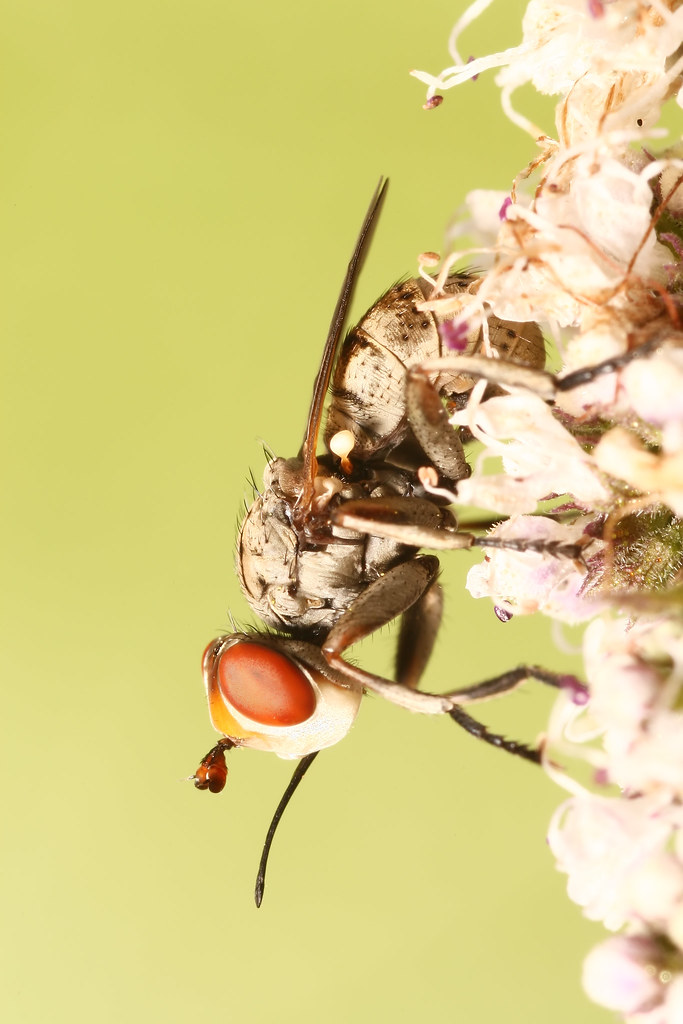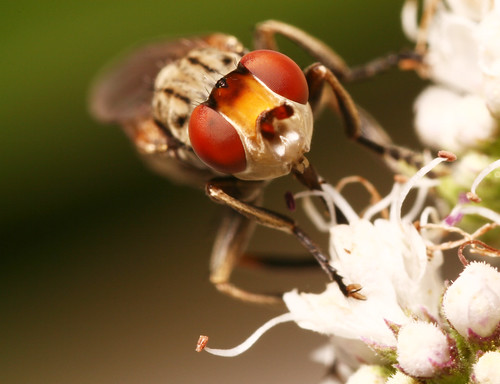Posted by jorgemotalmeida on 17-08-2007 16:25
#1
Hi flyforum
* locality - Silgueiros - Viseu - PORTUGAL
* date - 2007.08.16
* size - 5 mm
* habitat - openland
* substrate - Mentha sp. flower
I testified two great moments. I saw twice two conopids piercing two wasps very quickly. In less 1 second. Moreover, the wasps/bees were feeding on Mentha flower, so piercing can be done even with wasps/bees feeding not just during the flight. The wasp and the bee tried to respond immediately, but it seems that conopid got the wasp... I could catch just one wasp. (i will photograph it more later. ) If I recall well Zodion spp. attacked the bee. The other conopid that I will show more later attacked the wasp, if I'm not wrong. There were plenty of bees/wasps/flies (tachinids flying very near ground as well).
I saw many conopids around. I think that is Myopa sp. but not M. picta neither M. occulta.

What called my attention were two things: thorax striped, and tergites (in anterior part) are spotted with black dots. The proboscis is not so long as it happens with M. picta. it pointed almost above antennas. I will give you more photos more later and some more info about the fly.

i suggest that you take a look here to see it bigger:
http://www.flickr...142&size=o
then:

to see it bigger:
http://www.flickr...479&size=l
more images, more later. (I have lateral, dorsal and posterior views of this fly.)
EDIT---> Title changed from "grey conopid
 - Myopa sp. - not picta neither occulta
- Myopa sp. - not picta neither occulta  " to "grey conopid
" to "grey conopid  - Zodion sp." then "Zodion sp. Perhaps Z. cinereum?" then to "Conopidae - Zodion cf. cinereum?" to "Conopidae - Zodion cinereum"
- Zodion sp." then "Zodion sp. Perhaps Z. cinereum?" then to "Conopidae - Zodion cf. cinereum?" to "Conopidae - Zodion cinereum"Edited by jorgemotalmeida on 20-08-2007 19:58
